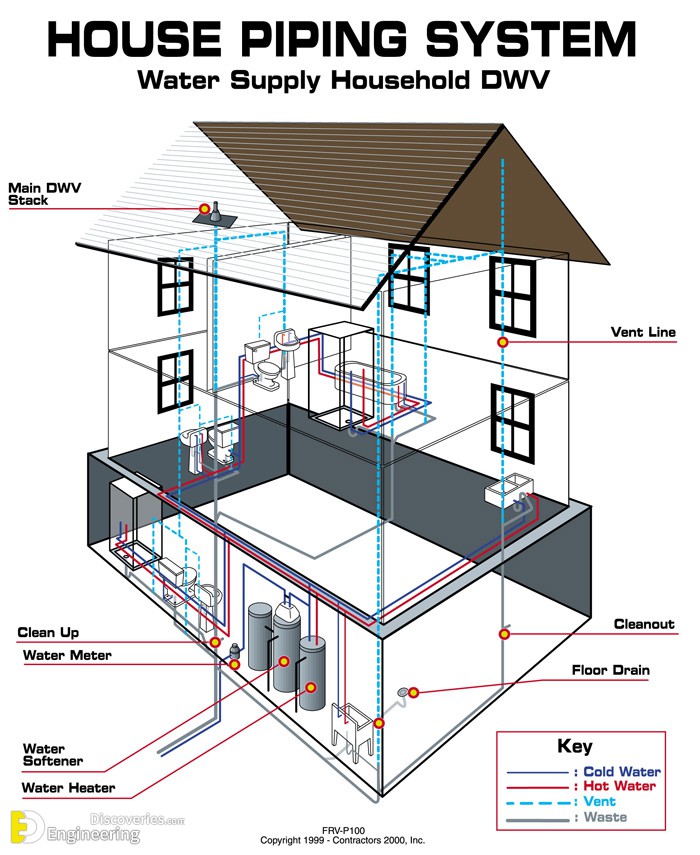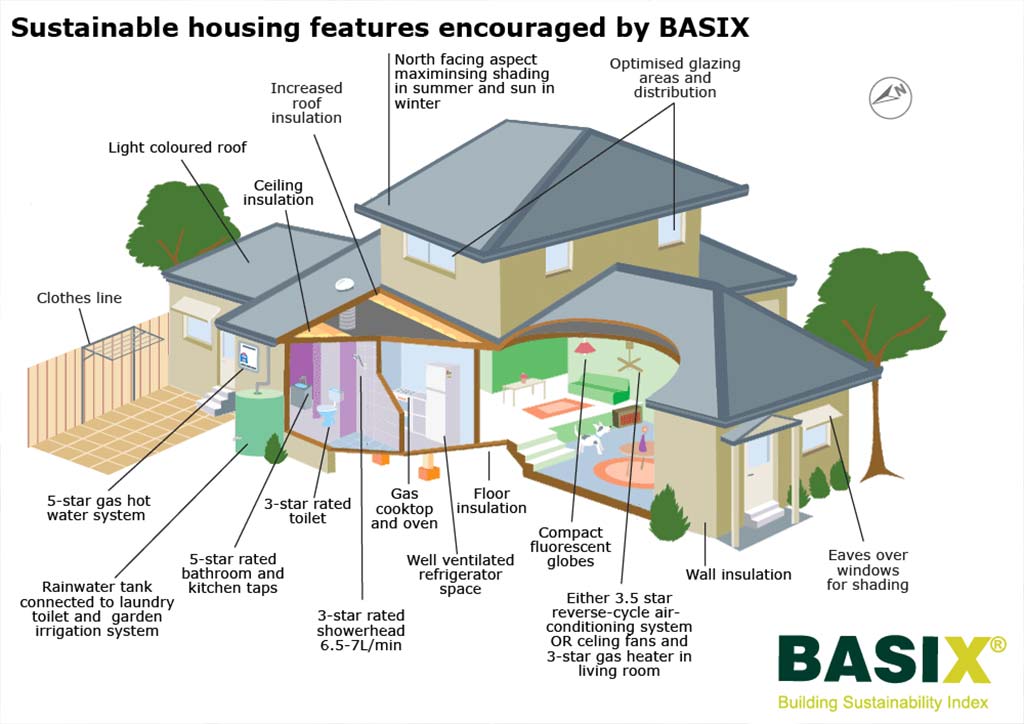The Complete Look at Your Property's Plumbing System Anatomy
The Complete Look at Your Property's Plumbing System Anatomy
Blog Article
What're your ideas with regards to Understanding Your Home's Plumbing Anatomy?

Understanding how your home's pipes system works is crucial for each homeowner. From supplying clean water for alcohol consumption, cooking, and bathing to securely getting rid of wastewater, a well-kept pipes system is critical for your family's wellness and convenience. In this extensive guide, we'll check out the detailed network that makes up your home's pipes and deal tips on maintenance, upgrades, and managing usual issues.
Intro
Your home's pipes system is greater than just a network of pipes; it's a complicated system that guarantees you have accessibility to tidy water and efficient wastewater removal. Understanding its parts and how they work together can assist you stop pricey repairs and guarantee whatever runs efficiently.
Standard Parts of a Pipes System
Pipelines and Tubes
At the heart of your pipes system are the pipelines and tubing that carry water throughout your home. These can be made from different products such as copper, PVC, or PEX, each with its benefits in regards to durability and cost-effectiveness.
Components: Sinks, Toilets, Showers, and so on.
Fixtures like sinks, toilets, showers, and bathtubs are where water is used in your home. Understanding how these fixtures link to the plumbing system assists in identifying issues and preparing upgrades.
Shutoffs and Shut-off Factors
Shutoffs regulate the circulation of water in your pipes system. Shut-off shutoffs are critical throughout emergency situations or when you require to make fixings, permitting you to separate parts of the system without interfering with water circulation to the whole residence.
Water System
Key Water Line
The major water line attaches your home to the local supply of water or a personal well. It's where water enters your home and is distributed to various fixtures.
Water Meter and Pressure Regulatory Authority
The water meter actions your water use, while a stress regulatory authority makes sure that water streams at a risk-free pressure throughout your home's plumbing system, preventing damages to pipes and components.
Cold Water vs. Hot Water Lines
Recognizing the distinction in between cold water lines, which supply water straight from the main, and warm water lines, which carry warmed water from the water heater, assists in troubleshooting and planning for upgrades.
Water drainage System
Drain Pipeline and Traps
Drain pipelines carry wastewater far from sinks, showers, and bathrooms to the sewer or sewage-disposal tank. Traps protect against drain gases from entering your home and also trap particles that can trigger clogs.
Ventilation Pipelines
Air flow pipes permit air right into the water drainage system, protecting against suction that can reduce water drainage and trigger traps to empty. Proper ventilation is essential for maintaining the honesty of your pipes system.
Value of Appropriate Drain
Guaranteeing correct water drainage stops backups and water damage. Regularly cleansing drains pipes and maintaining traps can protect against pricey repair services and prolong the life of your pipes system.
Water Furnace
Kinds Of Water Heaters
Water heaters can be tankless or typical tank-style. Tankless heating systems heat water as needed, while storage tanks store heated water for prompt use.
Upgrading Your Pipes System
Reasons for Updating
Updating to water-efficient fixtures or replacing old pipelines can boost water high quality, decrease water costs, and boost the value of your home.
Modern Pipes Technologies and Their Advantages
Check out innovations like smart leakage detectors, water-saving bathrooms, and energy-efficient water heaters that can conserve money and lower environmental impact.
Price Factors To Consider and ROI
Compute the upfront prices versus long-lasting savings when considering pipes upgrades. Lots of upgrades pay for themselves through lowered utility costs and less repair work.
Just How Water Heaters Link to the Plumbing System
Understanding just how water heaters connect to both the cold water supply and warm water distribution lines aids in identifying issues like insufficient warm water or leaks.
Upkeep Tips for Water Heaters
On a regular basis flushing your hot water heater to eliminate sediment, examining the temperature settings, and checking for leaks can expand its life expectancy and improve power effectiveness.
Common Pipes Issues
Leakages and Their Causes
Leakages can happen due to maturing pipes, loosened fittings, or high water stress. Dealing with leakages quickly prevents water damages and mold development.
Clogs and Obstructions
Clogs in drains pipes and toilets are commonly caused by purging non-flushable items or an accumulation of oil and hair. Making use of drain displays and bearing in mind what goes down your drains can stop obstructions.
Indicators of Plumbing Issues to Watch For
Low water stress, slow drains pipes, foul odors, or unusually high water expenses are indicators of prospective pipes problems that must be resolved promptly.
Plumbing Upkeep Tips
Regular Evaluations and Checks
Set up annual plumbing assessments to catch problems early. Try to find indicators of leaks, rust, or mineral build-up in taps and showerheads.
Do It Yourself Maintenance Tasks
Simple tasks like cleaning tap aerators, looking for toilet leaks making use of dye tablets, or protecting revealed pipes in cold environments can protect against major plumbing problems.
When to Call a Specialist Plumbing Professional
Know when a plumbing problem needs specialist proficiency. Attempting complicated repair services without correct knowledge can result in more damages and greater fixing prices.
Tips for Decreasing Water Usage
Easy routines like taking care of leakages without delay, taking shorter showers, and running full loads of laundry and meals can save water and reduced your energy costs.
Eco-Friendly Pipes Options
Take into consideration lasting pipes products like bamboo for flooring, which is durable and environmentally friendly, or recycled glass for countertops.
Emergency situation Readiness
Actions to Take Throughout a Pipes Emergency situation
Know where your shut-off shutoffs lie and just how to switch off the water in case of a burst pipe or major leak.
Significance of Having Emergency Contacts Handy
Maintain call details for neighborhood plumbing professionals or emergency situation solutions easily available for quick response during a plumbing situation.
Ecological Influence and Preservation
Water-Saving Components and Home Appliances
Installing low-flow faucets, showerheads, and toilets can significantly lower water use without compromising performance.
DIY Emergency Situation Fixes (When Applicable).
Temporary solutions like making use of air duct tape to patch a dripping pipeline or putting a bucket under a trickling tap can lessen damage until a specialist plumbing professional shows up.
Conclusion.
Recognizing the makeup of your home's plumbing system encourages you to keep it efficiently, saving money and time on repair work. By adhering to normal maintenance regimens and staying informed concerning contemporary plumbing modern technologies, you can ensure your plumbing system operates efficiently for several years to find.
The Anatomy of Your Home s Plumbing System
Understanding the anatomy of your home s plumbing system is essential for any homeowner. It not only helps in identifying potential issues but also facilitates effective communication with professionals when repairs or upgrades are needed. Your home s plumbing system is more than just pipes and faucets; it s a complex network that ensures the efficient and hygienic flow of water in and out of your house. In this blog, we ll dissect the crucial components of your home s plumbing system. For those in Antelope Valley, Brock Plumbing is your trusted partner for all your plumbing needs, ensuring your system functions smoothly and efficiently.
Water Supply System
Main Water Line: This is where your home s plumbing system begins. The main water line connects your home to the public water supply or a private well. Pipes and Shut-off Valves: Pipes distribute water throughout your home. Shut-off valves are crucial for controlling the flow of water and making repairs without shutting off the entire system. Drainage System
Drain Pipes: These pipes carry waste and water away from sinks, toilets, and showers. Vents: Vents allow sewer gases to escape and help maintain proper pressure in the drainage pipes, ensuring efficient flow of wastewater. Traps: Every fixture has a trap, a U-shaped pipe that holds water and prevents sewer gases from entering your home. The most common is the P-trap under sinks. Fixtures and Appliances
Fixtures and appliances are the most interacted with parts of your plumbing system. They include sinks, toilets, showers, dishwashers, and washing machines. Each fixture and appliance has its own supply and drainage connection, ensuring they receive clean water and can dispose of wastewater effectively.
Water Heating System
Your water heater is a crucial component, providing hot water to various fixtures and appliances in your home. It can be tank-based or tankless, with each type having its own set of advantages and maintenance requirements. Regular maintenance is essential to ensure efficient operation and extend the lifespan of the unit.
Sump Pump
In areas prone to flooding or with high water tables, a sump pump is an essential part of the plumbing system. It s installed in the lowest part of your basement or crawlspace and pumps out water that accumulates, preventing flooding and protecting your home from water damage.
Septic System
Homes that are not connected to a municipal sewer system have a septic system and an underground wastewater treatment structure. Understanding how to maintain your septic system is crucial to prevent backups, odors, and early system failure.
Conclusion
Your home s plumbing system is a complex and essential network, ensuring the efficient and hygienic flow of water in and out of your property. Understanding its key components helps in maintaining it properly and identifying issues before they escalate into major problems. For residents in Antelope Valley, Brock Plumbing is dedicated to providing top-notch services, ensuring that every part of your plumbing system is in perfect working order. Trust our team of professionals to handle all your plumbing needs, ensuring your home remains comfortable, safe, and well-maintained.
https://brockplumbinganddrains.com/blog/the-anatomy-of-your-homes-plumbing-system/

Hopefully you liked our topic about Plumbing Installation 101: All You Need to Know. Many thanks for taking the time to read through our short article. Enjoyed reading our blog posting? Please quickly share it. Let other people discover it. Kudos for being here. Don't hesitate to come by our site back soon.
Maintenance Sign-Up Report this page